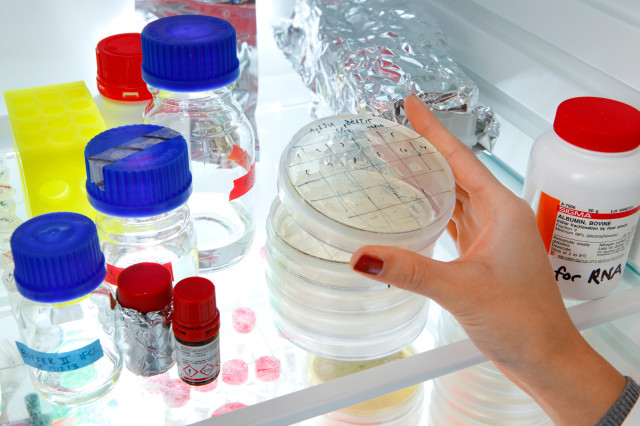The course contains the fundamental theory of bioinformatics analysis of large data sets from high-throughput genomics, transcriptomics, and proteomics experiments – in particular, massively parallel DNA sequencing and protein mass spectrometry: how this theory is implemented in state-of-the-art tools for analyzing the data; how these tools are applied on real high-throughput molecular biology data; and how the outcome of the analysis may be interpreted in a biologically or medically relevant context.
BB2491 Analysis of Data from High-Throughput Molecular Biology Experiments 7.0 credits
This course has been discontinued.
Decision to discontinue this course:
No information inserted
Information per course offering
Course offerings are missing for current or upcoming semesters.
Course syllabus as PDF
Please note: all information from the Course syllabus is available on this page in an accessible format.
Course syllabus BB2491 (Autumn 2017–)Content and learning outcomes
Course contents
Intended learning outcomes
After passing the course, the student should be able to:
1. Describe widely used high-throughput experimental techniques employed to investigate the DNA, RNA and protein contents of a cell, tissue, or organism.
2. Explain the theory of state-of-the-art tools/algorithms for processing data from high-throughput molecular biology experiments.
3. Choose appropriate tools for processing data from high-throughput molecular biology experiments.
4. Apply tools for processing data from high-throughput molecular biology experiments.
5. Interpret the results of these analyses in a biologically or medically relevant context.
6. Reflect over the choice of methods and tools and how it influences the outcome of the analyses.
Literature and preparations
Specific prerequisites
**Admission requirements for programme students at KTH:
**At least 150 credits from grades 1, 2 and 3 of which at least 100 credits from years 1 and 2, and bachelor's work must be completed. The 150 credits should include a minimum of 20 credits within the fields of Mathematics, Numerical Analysis and Computer Sciences, 5 of these must be within the fields of Numerical Analysis and Computer Sciences, 20 credits of Chemistry, possibly including courses in Chemical Measuring Techniques and 20 credits of Biotechnology or Molecular Biology.
**Admission requirements for independent students:
**A total of 20 university credits (hp) in life science courses ( e.g. biochemistry, microbiology and gene technology/molecular biology). 10 university credits (hp) in mathematics and 3,5 university credits (hp) bioinformatics. Documented proficiency in English corresponding to English B.
Literature
Scientific articles and web resources as assigned during the course. Handouts from the lectures.
Examination and completion
Grading scale
Examination
- PRO2 - Project, 6.0 credits, grading scale: A, B, C, D, E, FX, F
- LAB1 - Computer Exercises, 1.0 credits, grading scale: P, F
Based on recommendation from KTH’s coordinator for disabilities, the examiner will decide how to adapt an examination for students with documented disability.
The examiner may apply another examination format when re-examining individual students.
If the course is discontinued, students may request to be examined during the following two academic years.
No aids are allowed other than those specified in the course PM.
Other requirements for final grade
The final grade on the course is determined by the grade on the project (PRO2, grade scale A-F) and the computer exercises (LAB1, grade scale P-F). There are parts of the course that has compulsory attendance.
Examiner
Ethical approach
- All members of a group are responsible for the group's work.
- In any assessment, every student shall honestly disclose any help received and sources used.
- In an oral assessment, every student shall be able to present and answer questions about the entire assignment and solution.